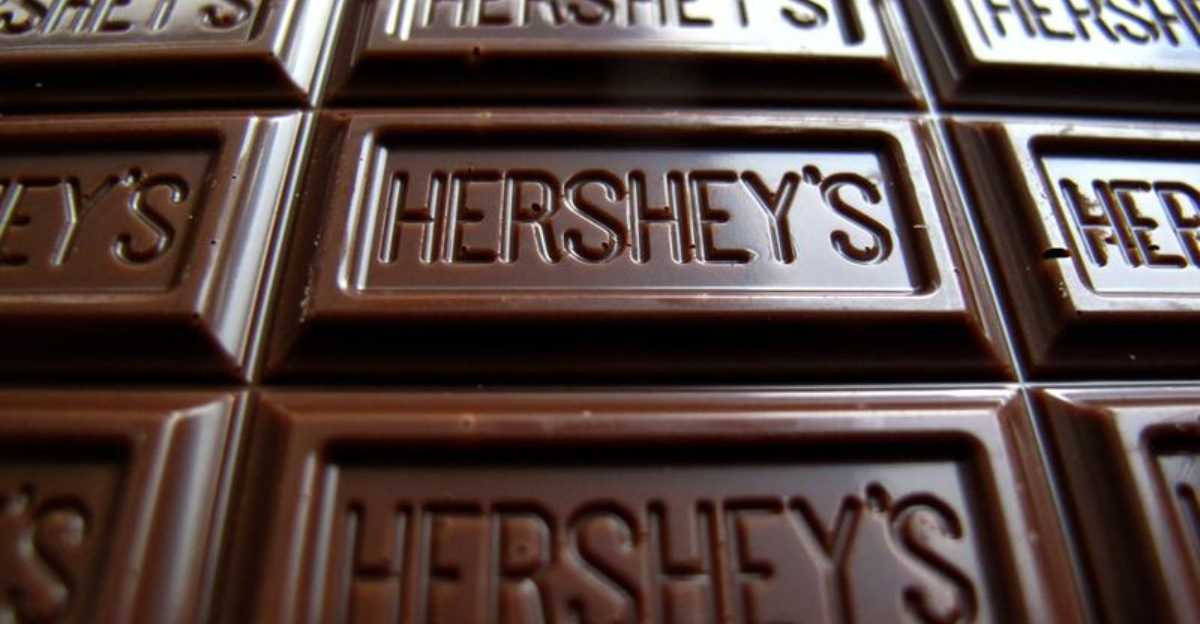Candy Recalls That Affected Millions Across U.S.

I never thought twice about popping candies into my mouth, until that summer morning when my son’s favorite chocolate bar flashed across the news ticker in a nationwide recall. It was a wake-up call.
Candy recalls might seem like a minor inconvenience, but they’ve impacted millions of Americans and raised serious health concerns, especially for children. From dangerous contamination and undeclared allergens to unexpected choking hazards, these seemingly innocent treats can sometimes pose real risks.
In response, manufacturers are often forced to pull products from shelves across the country. It’s a reminder to always stay informed about what we’re eating.
1. Palmer’s White Chocolate Nightmare
The spring of 2024 turned bitter for sweet-toothed Americans when Palmer Candy Company yanked their white chocolate treats from shelves nationwide. My daughter had just filled her Easter basket with their bunny-shaped confections when the news broke about potential Salmonella contamination.
Seventeen states felt the impact as retailers like Walmart and Target scrambled to remove products. The recall particularly devastated families planning holiday celebrations centered around these treats.
What shocked me most was learning that Salmonella symptoms can take days to appear. I immediately checked our pantry and returned two unopened packages, grateful we hadn’t indulged yet.
2. Deadly Rolling Liquid Candy
Nothing prepared me for the headline about a 7-year-old girl who lost her life because of a candy design flaw. In October 2023, Cocco Candy’s rolling liquid candy became a parent’s worst nightmare when the rolling ball detached, causing fatal choking.
Shortly after, Candy Dynamics recalled a staggering 70 million units of their similar “Slime Licker” products. I remember yanking these exact candies from my son’s Halloween stash the previous year, thinking they looked fun.
The recall spanned eight years of production, making me wonder how many of these potential hazards had passed through my own home unnoticed.
3. Chocolate Factory’s Multi-Million Pound Purge
My weekend baking plans crashed when Clasen Quality Chocolate Inc. announced their massive recall in June 2024. Nearly 5 million pounds of chocolate products potentially harbored Salmonella – enough to affect countless kitchens across nine states.
The recall particularly hit small bakeries who relied on Clasen’s bulk chocolate for their livelihoods. One local bakery owner told me she had to discard over $2,000 worth of inventory overnight.
Fortunately, no illnesses were reported, but the scale of this recall was mind-boggling. It reminded me how interconnected our food system is, one contamination can ripple through millions of homes.
4. Dinstuhl’s Allergen Ambush
My cousin with severe milk allergies narrowly avoided disaster thanks to the March 2025 Dinstuhl’s Fine Candy Company recall. Their chocolates, distributed throughout Missouri and Mississippi, contained undeclared milk allergens, a potentially life-threatening oversight for those with dairy sensitivities.
The FDA classified it as a Class II recall, indicating temporary health consequences were possible. But for someone like my cousin, “temporary” could mean hospitalization or worse.
This incident exposed a frightening reality about food labeling. Even established companies sometimes fail to properly identify allergens, leaving vulnerable consumers to play a dangerous guessing game with every bite.
5. Hershey’s Metal Fragment Fiasco
Finding metal in chocolate sounds like a twisted prank, but in 2016, it became reality. I was standing in the checkout line when I overheard shoppers discussing Hershey’s massive recall of Chocolate Shell Topping due to metal fragments discovered inside.
The company acted swiftly, recalling products nationwide after a customer reported finding a sharp metal piece. The thought of children potentially swallowing these dangerous fragments sent shivers down my spine.
What fascinated me was learning about the metal detectors most candy factories use. Something had clearly bypassed these safety measures, prompting Hershey to completely overhaul their quality control procedures following this alarming incident.
6. Mars Candy Bar Catastrophe
Super Bowl Sunday 2016 left a bitter taste when Mars announced a 55-country recall affecting Snickers, Mars, and Milky Way bars. My party guests gasped when I mentioned plastic pieces had been found in candies across multiple continents.
The contamination originated from a single factory in the Netherlands but spread globally. American stores pulled millions of chocolate bars from shelves overnight.
The recall began after a customer in Germany found a red plastic piece in a Snickers bar and traced it to a protective cover from manufacturing equipment. Mars’s transparency impressed me, they recalled products from January to February 2016 across their entire product line, prioritizing consumer safety over profits.
7. Jelly Belly’s Lead Contamination Crisis
Halloween 2018 turned terrifying when my daughter’s favorite Jelly Belly candies were pulled from shelves due to potential lead contamination. The company recalled specific batches of their fruit-flavored jellybeans after routine testing revealed concerning lead levels.
Lead exposure particularly threatens children’s developing brains and nervous systems. Parents nationwide frantically checked lot numbers against the recall list, myself included.
The source was traced to an ingredient supplier who had changed their processing methods without notifying Jelly Belly. This recall highlighted the fragility of candy supply chains, one change by one supplier can endanger millions of consumers, turning a simple treat into a health threat.
8. Nestlé’s Cookie Dough Calamity
Summer 2019 brought disappointment to my kids when Nestlé Toll House recalled their ready-to-bake cookie dough, a weekend tradition in our home. The company detected rubber pieces in certain batches, affecting millions of packages nationwide.
The recall particularly devastated my daughter’s birthday plans, as homemade cookies were supposed to be the party highlight. We discovered our package matched the recalled batch numbers just hours before baking.
Foreign objects in food present serious choking hazards, especially for young children. Nestlé later revealed the contamination stemmed from a rubber seal that had degraded during production, prompting them to implement new equipment inspection protocols across all their manufacturing facilities.
9. Swedish Fish Salmonella Scare
My movie night tradition of munching Swedish Fish came to an abrupt halt in 2022 when Mondelēz International recalled millions of packages due to potential Salmonella contamination. The bright red, fish-shaped candies disappeared from theater concession stands and store shelves overnight.
The recall originated after routine testing detected bacteria in the manufacturing facility. No illnesses were reported, but the company took preemptive action to protect consumers.
What surprised me most was learning that even non-chocolate candies could harbor dangerous bacteria. The gelatin and sugar mixture used in Swedish Fish creates an environment where bacteria can survive if processing temperatures aren’t properly maintained, a fact I’d never considered while enjoying my favorite movie snack.
10. Wonka’s Allergen Labeling Blunder
Golden ticket turned to fool’s gold when Nestlé’s Wonka-branded chocolates faced a massive recall in 2020. My peanut-allergic nephew nearly consumed their Exceptionals chocolate bars before we spotted news of the recall for undeclared peanut allergens.
The mislabeled packages affected over 3 million chocolate bars distributed to major retailers nationwide. For the 3 million Americans with peanut allergies, this oversight represented a potentially fatal threat.
The error occurred during a packaging redesign when allergen warnings were accidentally omitted from the new labels. This incident prompted Nestlé to implement a triple-verification system for allergen labeling, ensuring no warning would ever be missed again on their packaging.
